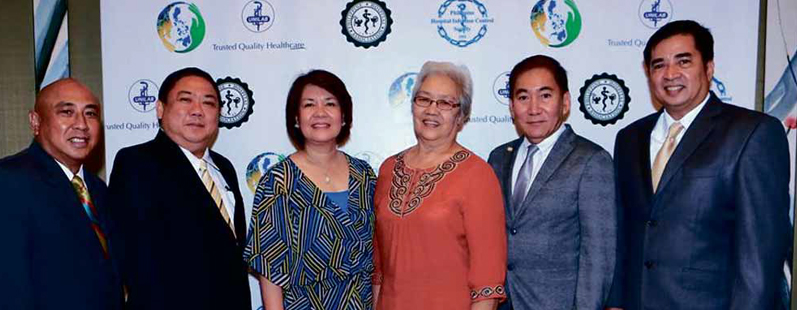
Dr. Melecia Velmonte, founder of the Philippine Hospital Infection Control Society (PHICS), recalled a time, not too long ago, when a patient was admitted to undergo a standard diagnostic test for dizziness.
The patient, unfortunately, caught pneumonia in the hospital, developed a bloodstream infection (sepsis) and eventually died. A supposedly routine workup costing no more than P2,700 cost a patient’s life—all because the hospital did not have a solid infection control and prevention program.
Hospitals are breeding grounds for thousands of microorganisms, Velmonte admitted. As the rate of multidrug-resistant organisms (MDRO) and methicillin-resistant staphylococcus aureus (MRSA, a staph bacteria resistant to many antibiotics) rises at an alarming rate, from 17 percent in 2001 to 48 percent in 2012, unsuspecting patients are now at higher risk of getting an infection, even during outpatient consultations.
“A hospital is where people go when they are sick, and when they are sick they become more susceptible to various diseases and infections. Hospitals are filled with microorganisms sensitive or resistant to antibiotics, bacteria, viruses, fungi and parasites,” Velmonte reiterated.
To encourage private and public hospitals to beef up their infection control and prevention programs, the Philippine Hospital Association (PHA), with United Laboratories Inc. (Unilab) and PHICS launched the country’s first Hospital Best Practices in Infection Prevention and Control awards.
“Through this initiative, we are hoping to reduce, control, minimize or maybe even eliminate hospital-associated infection… A good infection and prevention control program is a good element of quality care. We want to increase awareness on the importance of infection control, motivate healthcare providers to practice infection control measures, and sustain and institutionalize a good infection control program through strong management support,” said Dr. Ruben Flores, president of the PHA.
Risky procedures
Diagnostic and therapeutic procedures, such as catheterization, respiratory therapy, intravascular procedures and endoscopies, can increase risk of infection. Hospital-associated infection includes hospital-acquired pneumonia, surgical site infection, sepsis and catheter-related urinary tract infection.
Risk begins with the presence of the agent (bacteria, virus, parasites, insects), all transported through either direct contact, air, droplets, vehicles and vectors. All it takes is a susceptible host hovering within the vicinity of one of those agents, a patient whose immune system has been compromised, such as one afflicted with diabetes or cancer, for the infection to spread.
“Even if you have a susceptible host, if you have no means of transporting it, usually through either the hands, air and droplets, an infection will not develop,” Velmonte said.
Handwashing is one way of breaking the chain of infection, said Velmonte, but it’s not the only way. Proper disinfection and sterilization of the environment—one hospital takes two weeks to disinfect its intensive care unit facilities—isolation precaution, hygienic injection practices, and waste management play major roles in minimizing hospital-associated infection.
Healthcare workers and hospital personnel must be vigilant in their practice of proper hygiene and sanitation. Velmonte said that there are five moments of hand hygiene: before touching a patient, before clean/antiseptic procedure, after touching a patient, after body fluid exposure risk, and after touching the patient’s surroundings.
“The problem is, even if healthcare workers attend training programs, if they are not supported by the management of the hospital, nothing will happen. No implementation can occur in that hospital,” she said.
Healthcare-associated infections develop in hospitals more than 48 hours after admission, or even several days after exposure to infected patients and outpatient settings, such as in the case of chicken pox that develops after two weeks, she explained.
About 55 percent of units become colonized with MDRO. Even with the best of care, or with observance of the best protocol, Flores said 35-40 percent of healthcare-associated infection is inevitable. What’s important is having timely intervention.
To join the search, download the application form at these websites: PHA, Private Hospital Association of the Philippines Inc., Philippine College of Hospital Administrators, PHICS.
Interested participants may also e-mail [email protected] or [email protected]. Contest is open to all private and public hospitals. Cash prizes and free seminars await the winners.
Awarding will be on Nov. 21. There will be a grand prize, followed by first and second runners-up. There will also be five special awards: Best in Hand Hygiene, Best in Environmental Cleaning and Decontamination, Best in Management of Infection Prevention among Healthcare Workers, Best in Healthcare Waste Management, and Best in Isolation Precaution Management.









































